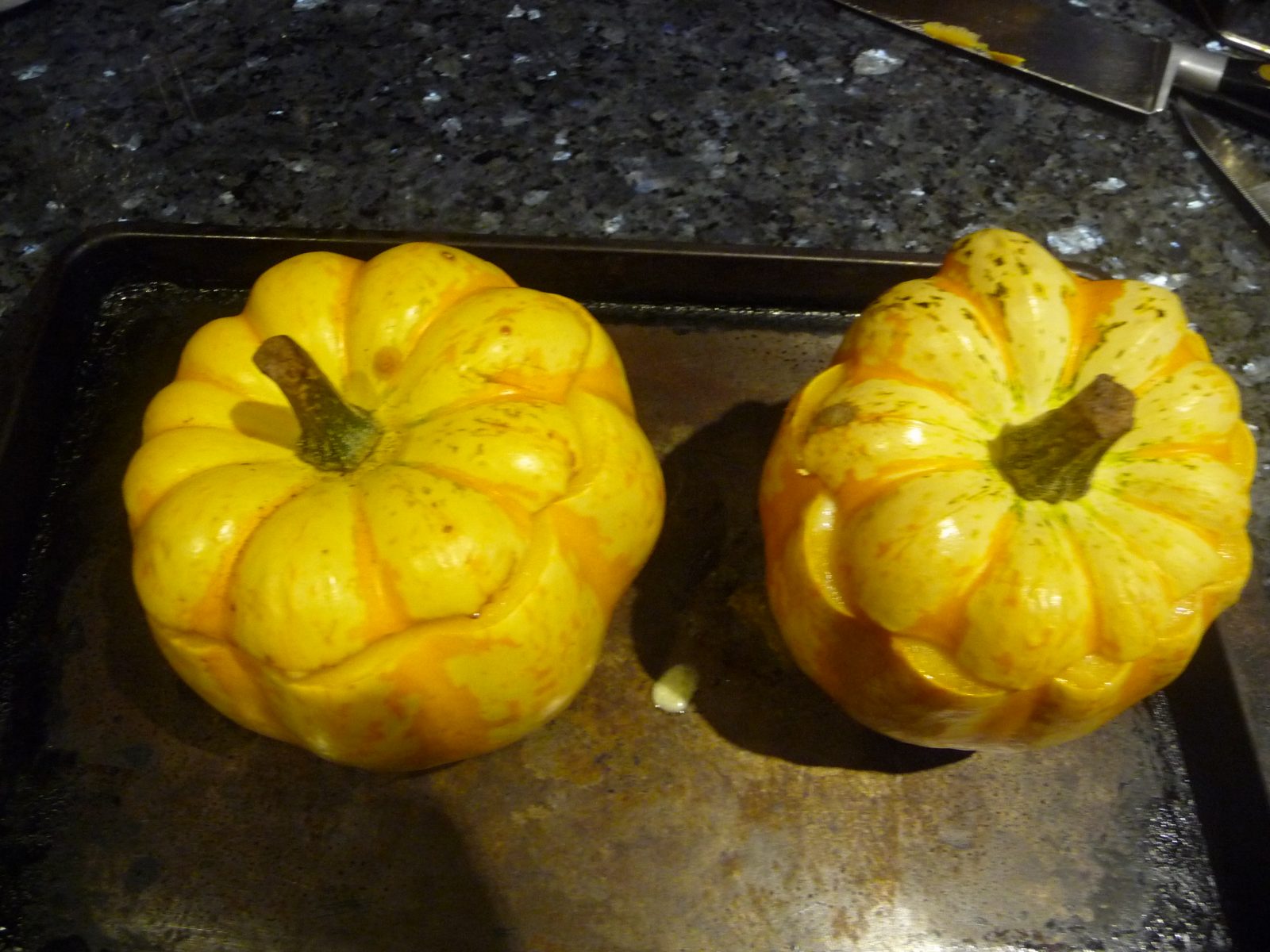
A big thank-you to CSA members Alex and Jeremy for recommending this recipe. It is taken from Hugh Fearnley-Whittingstall’s book Veg every day.
Serves 4
Preparation time: 30-40 minutes
Cooking time: 50-60 minutes
Ingredients
35g butter
2 large leeks, trimmed and thinly sliced
1 teaspoon English mustard
4 tablespoons crème fraîche
125g Gruyère or other well-flavoured hard cheese, finely grated
2–4 smallish squash (400–800g each)
A handful of thyme sprigs
Sea salt and freshly ground
black pepper
Method
Preheat the oven to 190C / gas mark 5. Heat the butter in a saucepan over a medium heat and add the leeks. As soon as they begin to sizzle, turn the heat right down and cover the pan. Sweat the leeks gently for about 10 minutes, until very soft. Remove from the heat and stir in the mustard, crème fraîche and cheese. Season the mixture well with salt and pepper, as it will be surrounded by a good amount of squash.
Cut a small slice off the base of each squash so it will stand up on a baking tray without wobbling. Carefully slice a “lid” off the top of each one too and set aside. Now, with a small, sharp knife, cut into the centre of each squash, then use a teaspoon to scoop out all the seeds and fibres.
Fill the squash cavities with the leek mixture – they should be about two-thirds full. Tuck a few thyme sprigs into the centre of each. Put the “lids” back on top and stand the squash on a large baking tray – there should be plenty of room for hot air to circulate around them.
Bake for 50–60 minutes – possibly longer if the squash are large – until the flesh feels very tender inside. Serve straight away.

This dish can be served as a main dish or as a side with roast meat.
Serves 4
Preparation time: 15 minutes
Cooking time: 40 minutes
Ingredients
1 medium butternut squash, peeled
1 heaped tsp coriander seeds, smashed
1-2 dried red chillies, crumbled
6 sprigs fresh thyme, leaves picked
sea salt and freshly ground black pepper
olive oil
250 ml single cream
1/2 a nutmeg, grated
a wineglass of Chardonnay
2 handfuls of freshly grated parmesan cheese
Method
Preheat the oven to 200°C/Gas mark 6. Cut the butternut squash in half lengthways, remove the seeds, then cut into 1 inch slices and toss in a bowl with the smashed coriander seeds, chilli, thyme leaves, salt and pepper and a good glug of olive oil to coat everything. Mix around then place the squash slices tightly in a roasting tray or earthenware dish, standing up on their sides. Take a piece of greaseproof paper slightly larger than the roasting tray, dampen it under the tap and scrunch it up then drape it over the squash, tucking in at the sides. Place the tray in the oven for about 30 minutes or until the squash starts to soften. While the squash is cooking mix together the grated nutmeg, cream, wine, half the parmesan, salt and pepper. Take the butternut squash out of the oven, remove the greaseproof paper, pour over the creamy sauce and sprinkle with the rest of the parmesan. Place with the squash back in the oven for another 10 minutes until golden, bubbling and delicious.
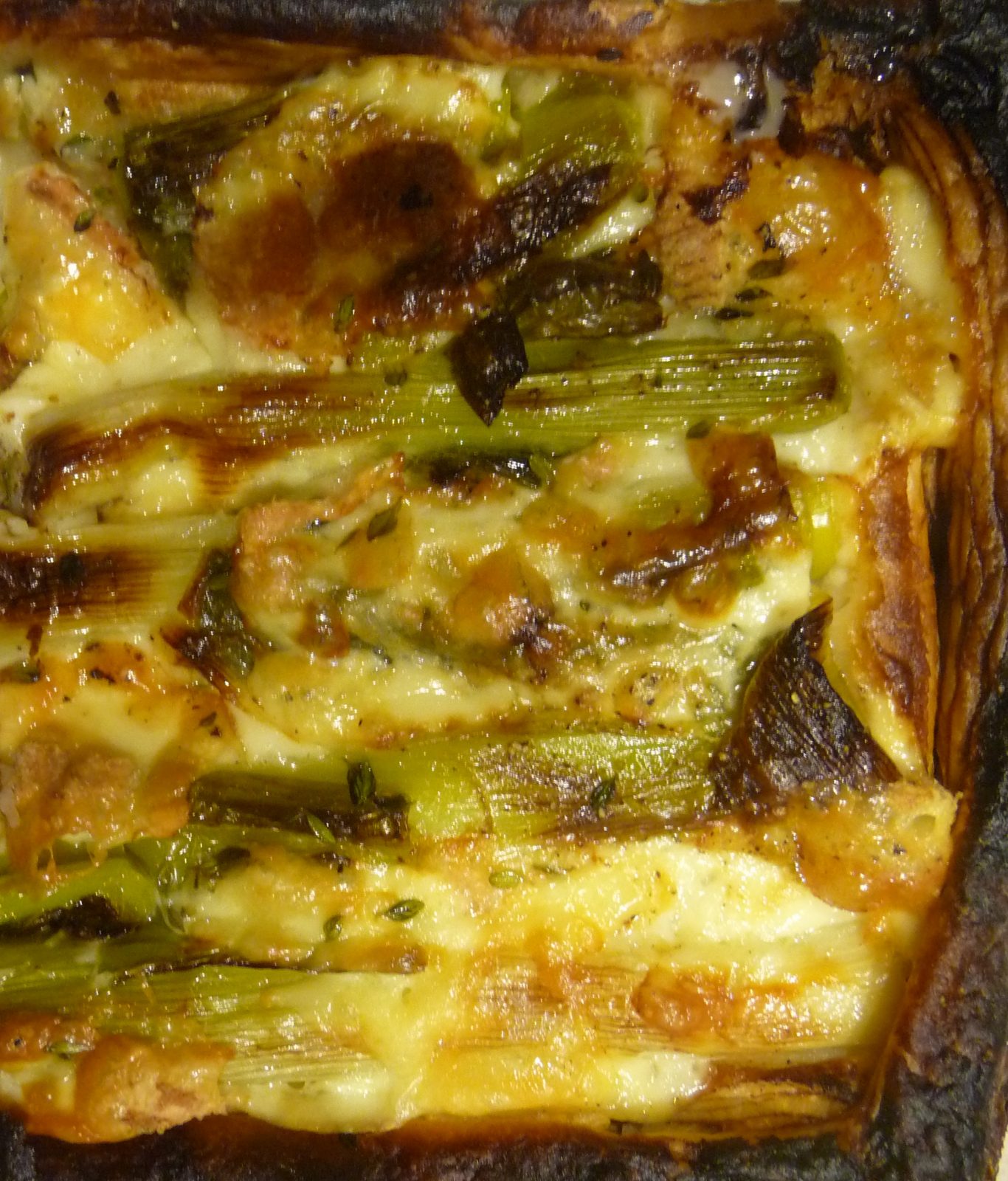
I made this delicious tart for tea; it was easy to make as I used ready rolled puff pastry. If you can’t get taleggio you can use fontina or Camembert.
Serves: 2
Preparation time: 40 minutes
Cooking time: 15-20 minutes
Ingredients
3 medium leeks, sliced
50 g butter
200 g puff pastry
120 g Taleggio cheese
1 tsp fresh thyme leaves
Method
Melt the butter in a shallow pan and add the sliced leeks. Cook the leeks slowly intil they are soft but not browned, this can take up to 30 minutes. Roll out the pastry until no thicker than a 10 p coin and place on a floured baking sheet. Score a border 2 cm from each edge and prick with a fork. Tip the leeks on to the pastry, pushing them almost, but not quite, to the border. Brush the rim with some of the leek butter. Slice the cheese thinly, then break it up into small pieces, tucking it in amongst the leeks. Scatter over the thyme. Bake in the oven at 220°C/Gas Mark 7 for 15-20 minutes until the pastry is golden and puffed and the leeks are browning.
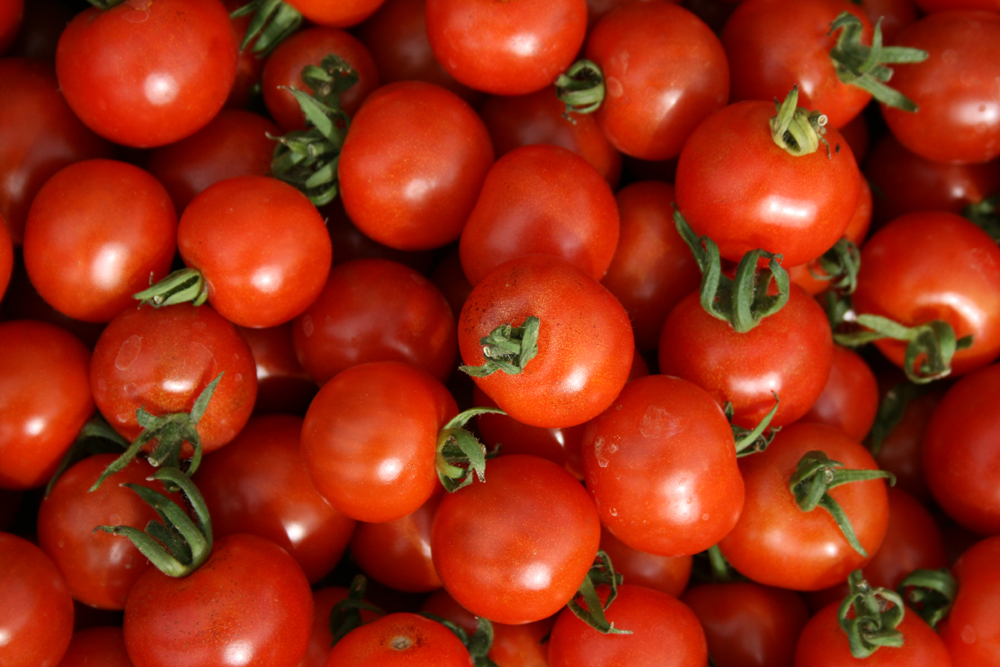
This is a brilliant way to use up a surplus of tomatoes. Once made it can be frozen for later use as a pizza topping or with pasta. It is from Hugh Fearnley-Whittingstall’s Veg every day.
Makes about 500ml
Cooking/preparation time: 1-1hour 15 minutes
Ingredients
1.5-2 Kg ripe tomatoes, larger ones halved
3 garlic cloves, finely chopped
a few sprigs of thyme
A couple of sprigs marjoram (optional)
2 tbs rapeseed or olive oil
sea salt and freshly ground black pepper
Method
Preheat the oven to 180°C/Gas mark 4. Lay the tomatoes, cut side up if halved, on a baking tray. Scatter over the garlic and herbs and trickle over the oil. Season with salt and pepper. Put the tomatoes in the oven for about an hour until the tomatoes are completely soft and pulpy and starting to crinkle and caramelise on top. Leave to cool then tip them into a sieve and rub through with a wooden spoon. Your tomato sauce is now ready to use.
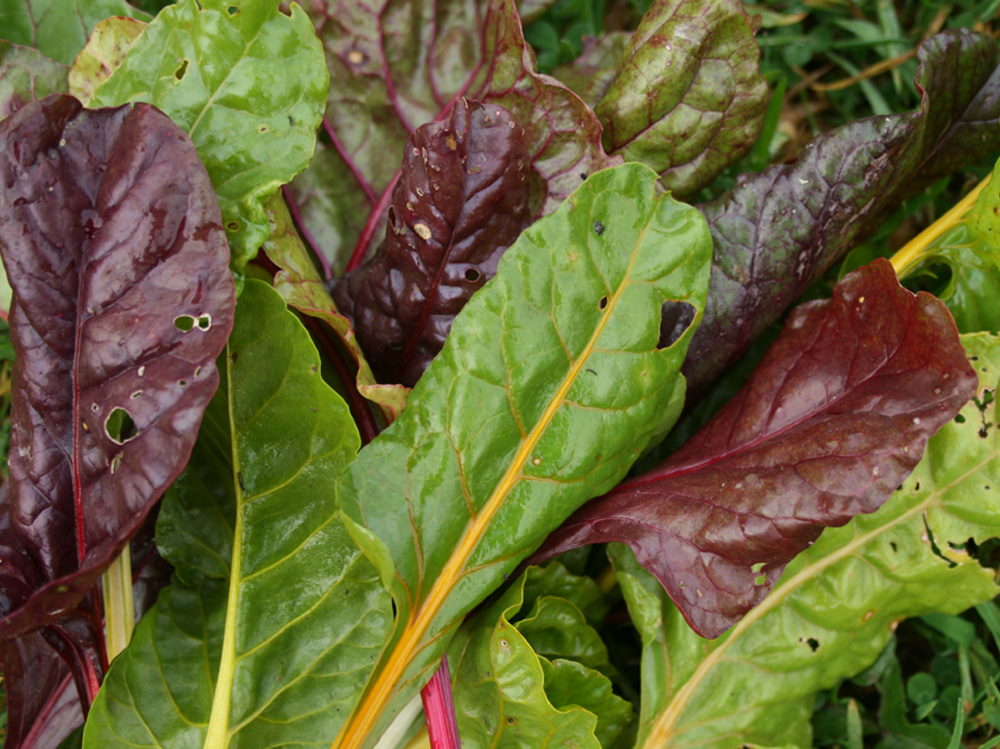
I made this for tea on Friday – it has to be said that swiss chard is not one of my husband’s favourite vegetables but after he had polished off a second helping he said I could make it again! I cheated and used ready-made and ready rolled pastry! It is from the Riverford Farm cook book.
Serves: 4
Preparation time: 45 minutes
Cooking time: 15 minutes
Ingredients
300g shortcrust pastry
50g butter
3 small onions, finely sliced
leaves from 1 sprig of thyme
300g swiss chard
10 olives, chopped
3-4 tbs creme fraiche
1/2 tbs freshly grated parmesan cheese
sea salt and freshly ground black pepper
Method
Roll out the pastry on a lightly floured surface and place on a baking sheet, prick with a fork in several places and chill for 15 minutes (it doesn’t need to be a uniform shape). Place in a pre-heated oven 200°C/gas mark 6 and bake for 10-15 minutes, until golden brown. Once the pastry is rolled out you can start to prepare the topping. Heat the butter in a pan, add the onions and thyme and cook gently for about 10 minutes until soft but not coloured. Meanwhile, separate the chard stalks from the leaves and chop both leaves and stalks roughly, keeping them separate. Add the stalks to a pan of boiling water and cook for 2-3 minutes, until tender. Remove the stalks with a slotted spoon and set aside. Add the leaves to the boiling water and blanch briefly. drain well, refresh under a cold tap and then squeeze to remove as much water as possible. ( I actually cooked the chard stalks with the onions and wilted the leaves in the microwave.) Add the chard stalks and leaves to the onions and reheat gently. Season to taste and mix well. Spread the mixture over the pastry base and sprinkle with the chopped olives, parmesan and a few blobs of creme fraiche. Bake in the oven 190°C/gasmark 5 for about 15 minutes, until lightly browned.
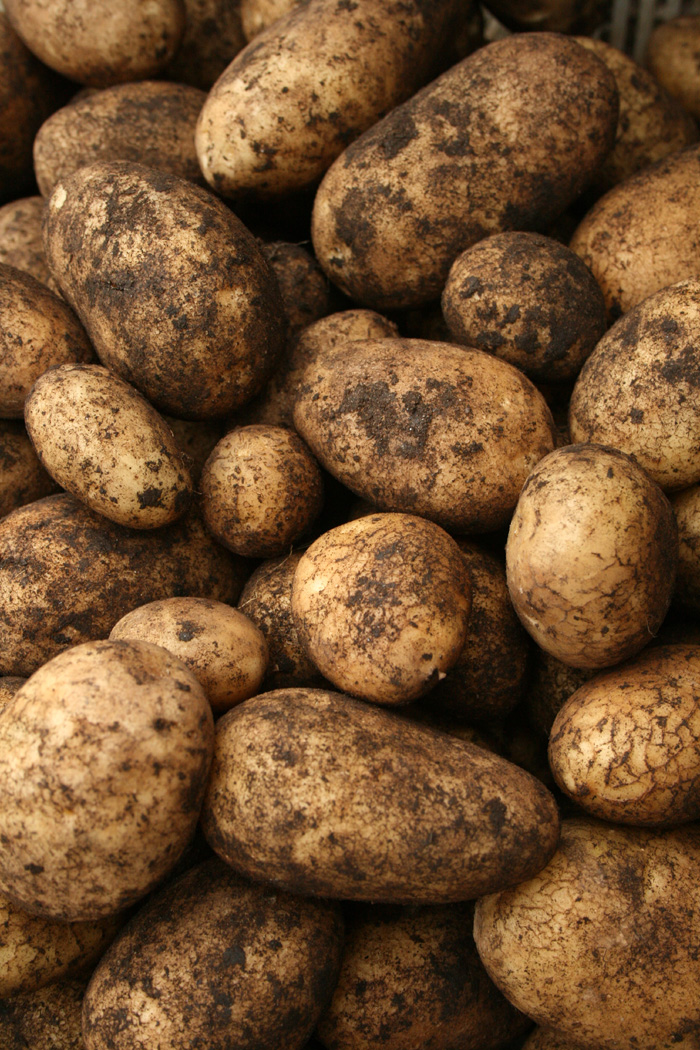
From Nigel Slater’s Tender cookbook. “Good with lamb,” he says.
Enough for 6
Preparation: 15 minutes
Cooking: 50 minutes
Ingredients
5 medium potatoes (floury are best)
90g butter
leaves from 4 sprigs of thyme
Method
Set the oven to 200C/Gas 6. Peel the potatoes and slice them thinly. They should be so thin that you are almost able to see through them. If you tend to work slowly, put the sliced potatoes into a bowl of cold water to prevent them browning.
Melt the butter, then brush some of it on to the bottom and sides of a loaf tin (or use a round, solid-based tin). Cover with a piece of greaseproof paper, leaving a little extra overlapping the sides to get hold of when you come to turn out the cake. Cover the bottom of the tin with slices of potato, brush with more butter and season with salt, pepper, and a light sprinkling of thyme leaves. Continue layering the potatoes, adding the butter and seasonings every two or three layers, until you have used them all up. Pour any remaining butter over the top. Bake for 40-50 minutes, till the top is golden and a skewer can be inserted effortlessly into the layers of tender potato.
To serve, lift the potato cake out by holding both long sides of the greaseproof paper and pulling upwards. Cut into six pieces. If it falls apart, and well it might, just push the slices back together.


